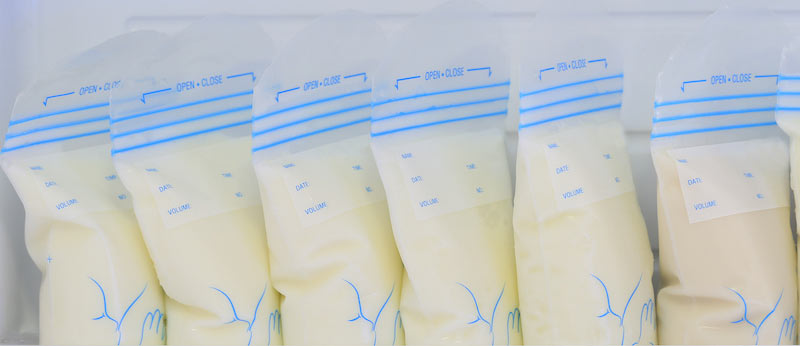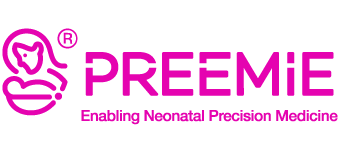Human Milk Fortification Strategies for Low Birth Weight and Preterm Infants

Breast milk is recognized as the best source of nutrition for newborns and its use is officially recommended to feed term and preterm babies. When breast milk is not available, donated human milk can be used.
Human milk is an incredible product of evolution that naturally contains all the nutrients needed by newborns and components, such as human milk oligosaccharides (HMOs), which only mothers can produce. You can discover more about the unique characteristics of human milk in this article.
In addition to its nutritional benefits, breast milk helps newborns to strengthen the immune system, improve long-term neuro-cognitive development and, in the case of preterm infants, offers protection against the main complications that can arise during the stay in the Neonatal Intensive Care Unit (NICU).
Preterm babies need more
Preterm infants and all low birth weight (LBW) infants, have special nutritional needs, and sometimes human milk, despite its extraordinary characteristics, may not be sufficient to meet those needs. Human milk is a very complex substance whose nutritional values as protein, fat and HMOs change over time, making it an ever-changing substance from the chemical composition point of view.
For example, the most critical period for brain growth and development in humans corresponds to the third trimester of gestation; preterm babies who are born within this period may miss the placental transfer of nutrients needed during the postnatal period. This could mean that these babies will have greater nutritional requirements, more than those offered by the mother’s milk.
To overcome these problems, NICUs enrich the mother’s milk with specific nutrients to ensure optimal development and growth of preterm babies.
Human milk fortification strategies
The use of human milk fortifiers for preterm infants is now considered a common practice in most NICUs; they rely on fortifiers that differ in the origin (bovine, human or donkey milk) and composition (multi-nutrient fortifiers or supplements for proteins, lipids and carbohydrates). In particular, for preterm infants, protein supply is extremely important: protein intake deficiency affects growth and carries the risk of neuro-cognitive impairment.
The standard approach to human milk fortification calls for the addition of a standard amount of fortifier to a specific amount of milk, regardless of the nutritional content of the human milk. It is a very rapid and inexpensive fortification strategy which, however, does not take into account the needs of the individual infant nor the intrinsic variability in mother’s (or donated) milk macronutrients. As a result, standard fortification makes it almost impossible to achieve the internationally recommended nutritional targets, leaving space for potential negative consequences in terms of growth and development of infants.
In general, standard fortification can provide right energy intakes but is not recommended to provide the correct protein intake for very low birth weight and preterm infants. Besides, standard fortification increases the risk of incurring in infants’ over-nutrition, which can have serious health consequences as well. In order to favor the optimal growth of preterm infants in NICUs, it is, therefore, necessary to adapt the fortification strategy to the specific needs of each child over time.
The scientific community and experts are now engaged in promoting the practice of individualised fortification, which is believed to be the solution to the problem of low birth weight and preterm infants’ undernourishment. Individualised fortification consists of two methods, adjustable fortification and target fortification.
Adjustable fortification was designed specifically to avoid protein under-nutrition and over-nutrition: the logic behind this approach is to regulate protein intake based on the child’s metabolic response. Even though Blood Urea Nitrogen (BUN) levels only roughly correlate with the protein intake in infants, BUN is used to guide the amount of additional protein needed. NICUs analyze BUN levels twice a week and intervene accordingly, fortifying milk with the right protein intake for each child.
Adjustable fortification has the clear advantage of taking into account the actual protein levels of preterm children, therefore reducing the possibility of incurring in under- or over-nourishment. The reliability of the approach can be undermined by the fact that, in premature babies, BUN values may be subject to confounding values. Furthermore, the variability of milk is also not considered.
Target fortification is about human milk and its characteristics. Human milk composition is analyzed in order to identify its wide range of macronutrients so to perform a targeted fortification that does not just focuses on protein, but also on other macronutrients that play an important role in baby’s development. Another benefit of this approach is the ease of analysis, the repeatability of which allows to take into account the natural variability of human milk. Recent improvements in this approach made target fortification a promising fortification practice: in this context, the European Commission funded a project that has the potential to innovate low birth weight and preterm health.
With Preemie, the analysis of human milk is performed via a NIR (Near InfraRed) spectroscopic sensor and NICUs’ operators get results in real-time, and can fortify milk accordingly, using single components fortifiers (i.e. each fortifier addresses one or more class of macronutrients). Until recently, target fortification has been considered impractical due to the size and high cost of the analyzers, the time it takes to get a result, the time-consuming procedures to analyze human milk and the need of skilled personnel performing the analysis.
Preemie system improves then the concept of target fortification introducing a portable and affordable NIR sensor specifically calibrated for human milk that will allow NICUs’ operators to easily perform human milk analyses. The system features an AI-engine running in the cloud able to provide precise recommendations on the fortification, correlating optimal growth for each infant over time. Preemie also helps milk banks by allowing donor’s milk traceability through a blockchain protocol and testing for spoilage before milk is pooled.
References:
- Fortification of human milk for preterm infants: ipdate and recommendations of the European Milk Bank Association (EMBA) working group on human milk fortification
- Blood Urea Nitrogen concentrations in low-birth-weight preterm infants during parenteral and enteral nutrition
- Human milk fortification strategies for improved in-hospital growth of preterm infants
- Is targeted fortification of human breast milk an optimal nutrition strategy for preterm infants? An interventional study

